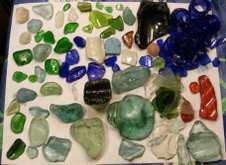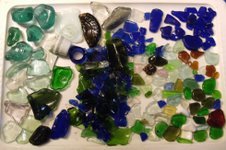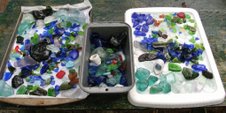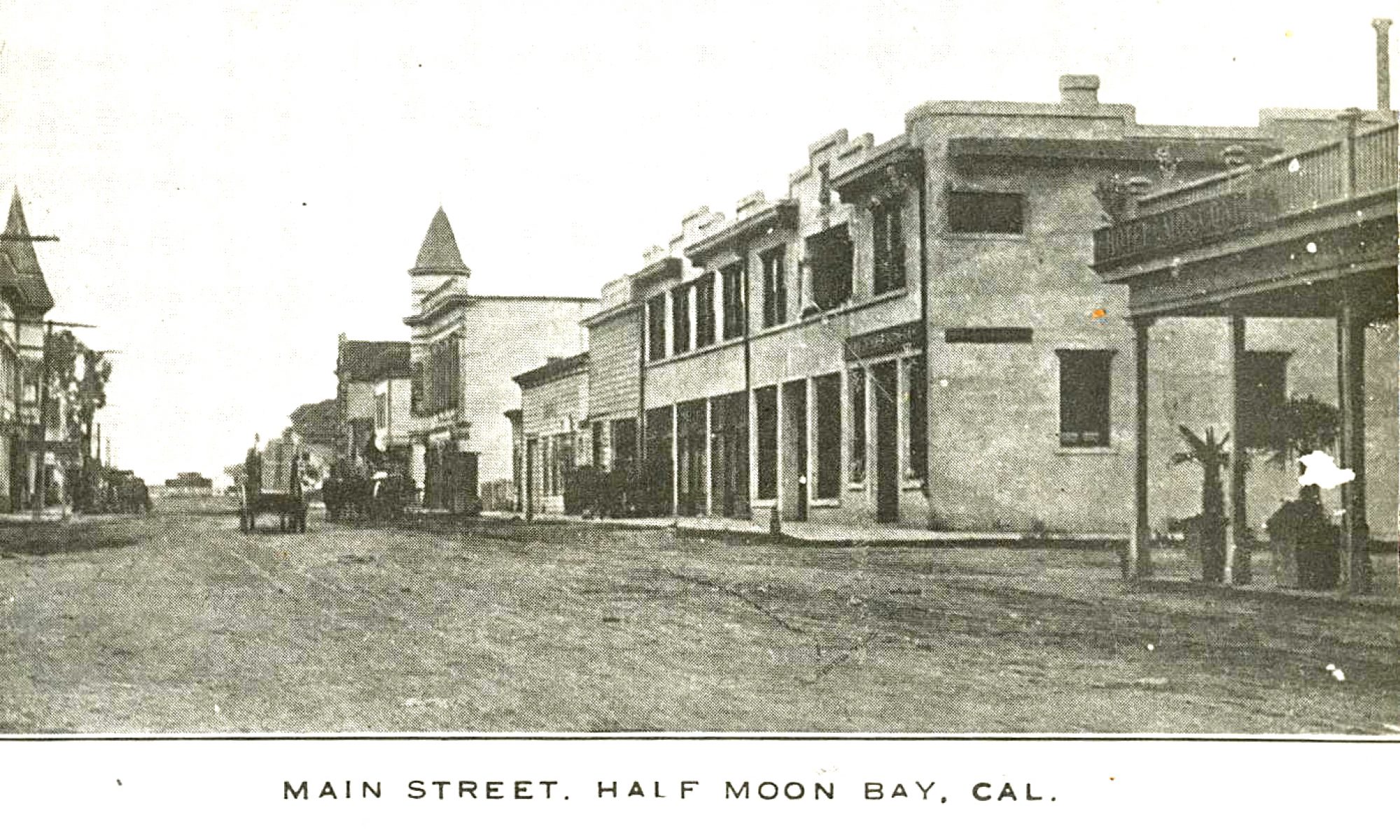Story by John Vonderlin
Email John: [email protected]


Hi June,
One of Sir Walter Scott’s, most famous quotations is, “Oh. What a tangled web we weave, when first we practice to deceive.” Well, thanks to a bit of serendipity and our carefully nurtured cynicism, I believe we’ve discovered a situation that exemplifies the quotation’s message, a situation that might best be described by a similar-themed Scottish word, “skulduggery.” Somebody actually tried to carry out the deception of producing natural sea glass “gems” by finding an isolated and difficult-to-reach cove along the Coastside, and dumping a large collection of glass chunks, many of rare colors and types, into the gravel there, hoping for time and tide to give them an “authentic” surf-created polish, so prized by sea glass collectors. Well, they got lucky. because I found the scene of their crime, forthwith named Skulduggery Cove, and cleaned it up for them. While I don’t know the details of the law, I’m guessing dumping sharp pieces of glass into the Monterey Bay Marine Sanctuary, and thereby on a San Mateo County beach, for profit, is probably a big No! No! Now, I may be wrong about the “profit” part, and this is just an obsessed, misguided collector/artist, doing this. But, the circumstantial evidence says otherwise as I’ll outline in a future posting. As you remember, I posted briefly a few weeks ago about having the greatest sea glass collecting event in my life. Yet, I believed it might be a case of having to look a gift horse in the mouth and yell foul. That instead of having stumbled on a King Tut-ish trove of sea glass, I had stumbled on a counterfeiting operation. The PhD of a hoaxster graduate of the “Piltdown Man School of Shenanigans.” Well, having returned to the scene of the crime twice more, each time collecting a wonderful, if diminishing, assortment, of colorful glass chunks, I now have a more nuanced view of the whole enterprise. But, that might be because I’ve now collected enough sea glass to fill a large glass container, with which I’ll create a piece of artplay. I’ll be calling the piece, “Chicanery Glass.” I’m also expecting to enjoy myself writing a series of postings about this delicious subterfuge and all the subtle flavors wafting from it. Here’s an excerpt from my description of how this came to light on my first trip: …….Such was the case Monday, though the low tide was only a minus -.5. Picking out one of the difficult to reach, except during a good low tide, stretches of our coastside beaches, we soon were exploring. This particular stretch, south of Pigeon Point, has been our most reliable and prolific producer of abalone shells, including many complete ones. And though we don’t collect them, it’s fun to gather them and pass them on to a local artist for use in his creations. We weren’t finding many, which wasn’t surprising, as others surely had combed this stretch since the big storms of last winter. Still, I had my “Search and Find” circuits alert for small, easy to miss, yet attractively polished pieces. Hiking south we had carefully worked our way over the slimy rocks jutting from the end of a point and into a small pocket cove, I was delighted to see two pieces of cobalt blue sea glass, one of the rarer colors, nestled in the pebbles. Excitedly looking about, I found another, and another, then a piece of an unusual color of green, and then more blue. So it went, dozens of pieces of blue, interspersed with other unusual colors, with just a few of the common clear, brown or green found in so many beer or soda bottles. I was just thinking how this was the best collecting I’d ever done when “Eureka,” I spied a nickel-sized piece of red glass. I had never before found even one piece of this very rare color. Admiring it for just a second as I turned it over in my hand, I quickly cast my focus about my feet again and saw another. “Let me die now cuz it don’t get better then this,” I’m thinking. How wrong I was. As I moved up the beach to the base of the cliff I continued finding a rainbow of colors, along with a number of larger pieces, some that I quickly identified as parts of glass insulators, popular collector’s items themselves. Sea glass collector books opine that larger pieces, through some dynamic of the waves, tend to end up higher on the beach. This was the case here as the gravel at the cliffbase was smothered with a heaping helping of tasty specimens. I should mention. I’m not actually a sea glass collector. I do have a sea glass collectiom that fills several ornate clear vases, but it’s just another exhibition of a variety of non-buoyant marine debris, rather then a collector’s pride and joy. While I do admire the gemlike, polished contours of “Mermaid’s Tears,” the general lack of a history of dumping glass into the ocean along the southern Coastside, makes for slim pickings locally. That’s especially true for any color that didn’t originate from a beer bottle. This just was not the circumstance that generated much collecting enthusiasm in me. At some point, as I kept mining this bonanzic Mother Lode of treasure, where there should be none, cynicism crept in. Why had we seen none of this in any previous hikes through this cove? How could the majority of the pieces be of the rarer colors? And how come some of the pieces are sharp and fresh looking, while others are highly polished? I’ve been presented with a veritable enigma-stuffed conundrum slathered with a secret mystery sauce. Assuming deceit, why had somebody gone to all the trouble? When did they start? What were the pieces of unusual glass from? Where had they been acquired? Were there preliminary steps before leaving them at the beach? Who does this deceit offend or hurt? What is its value? I’ll try to answer these questions in Part 2 of “Chicanery Glass.” Here are photos of the booty from my second and third visits to Skulduggery Cove and one picture of the my complete collection, so far, of “Chicanery Glass.” Enjoy John

